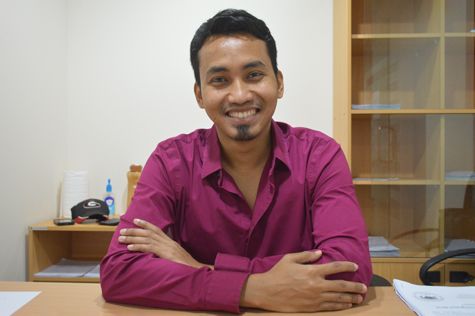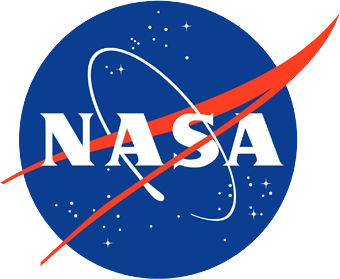Early Career Scientist Spotlight
Dr. Shiblee Barua
Computational Astrochemist
Planetary Systems Laboratory
What is your research focus?
My primary research focus is studying the gas-phase atmospheric chemistry of Titan, the largest moon of Saturn. Although Titan receives only about one-percent of the sunlight we receive here on Earth, the high-energy ultraviolet (UV) light can break down methane (CH4) and nitrogen (N2) gas in Titan into fragments called “radicals”. These radicals are chemically very reactive, and they quickly get attached to each other in different combinations to form hydrocarbons, nitriles, and other organic molecules. As more and more radicals combine, the organic molecules keep growing in size, and this eventually leads to the formation of haze and aerosols that give Titan its characteristic orange glow. When these organic molecules grow large and heavy, they gradually descend down to Titan’s surface. Scientists believe these organic chemicals could act as a source of nutrients for possible lifeforms on the ground. Thus, having a comprehensive understanding of the chemistry in Titan’s atmosphere is significant to studies of Astrobiology.
Using quantum chemistry models, I investigate how quickly (or slowly) the radicals react with each other in cold Titan conditions to form the organic molecules. This knowledge of reaction rates is crucial for planetary scientists and atmospheric modelers to accurately determine the amounts of different gases in Titan, and how these amounts vary with altitude. As mentioned earlier, these gases directly contribute to the formation of haze and aerosols which ultimately descend down to Titan’s surface. Besides Titan’s chemistry, I have recently been investigating gas-phase sulfur chemistry in the atmosphere of Venus and similar hot exoplanets.
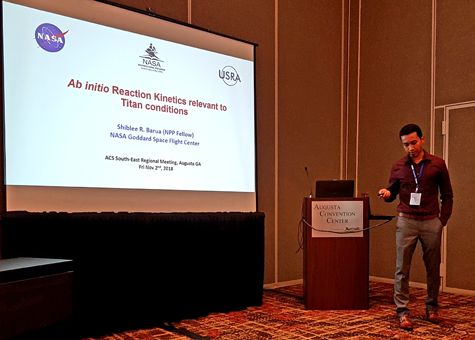
Credit: Shiblee Barua
Did you always know that you wanted to be a Computational Astrochemist?
Not at all! I started off as a Physics and Mathematics major in my undergrad and did not take a single chemistry class in college. Moreover, my PhD classes in Computational Quantum Chemistry had a greater focus on quantum physics and math than chemistry. I basically taught myself chemistry while working as a graduate teaching assistant in chemistry labs. My diverse academic background in physics, math and chemistry has helped me immensely in pursuing my career as a Computational Astrochemist.
How did you end up working at NASA Goddard?
After finishing my PhD, I worked as a faculty member in two different schools. First, I served as a Chemistry Lecturer at California Polytechnic State University (Cal Poly) in San Luis Obispo, CA for a year. Next, I worked as an Assistant Professor of Chemistry at North South University (NSU) in Dhaka, Bangladesh for another year. These two faculty positions further strengthened and enhanced my chemistry knowledge. While at Cal Poly, I got interested in planetary atmospheres and got in touch with Dr. Paul Romani, a planetary scientist at Goddard and an investigator on NASA’s Cassini Mission. Paul and I then submitted a proposal to the NASA Postdoctoral Program (NPP) to study Titan’s atmospheric reaction rates. I got rejected the first time, but I resubmitted, and ultimately won the fellowship with Paul as my adviser. I worked as an NPP fellow from 2017 to 2020, and currently I am employed with Universities Space Research Association (USRA) as a Visiting Associate Scientist at Goddard.
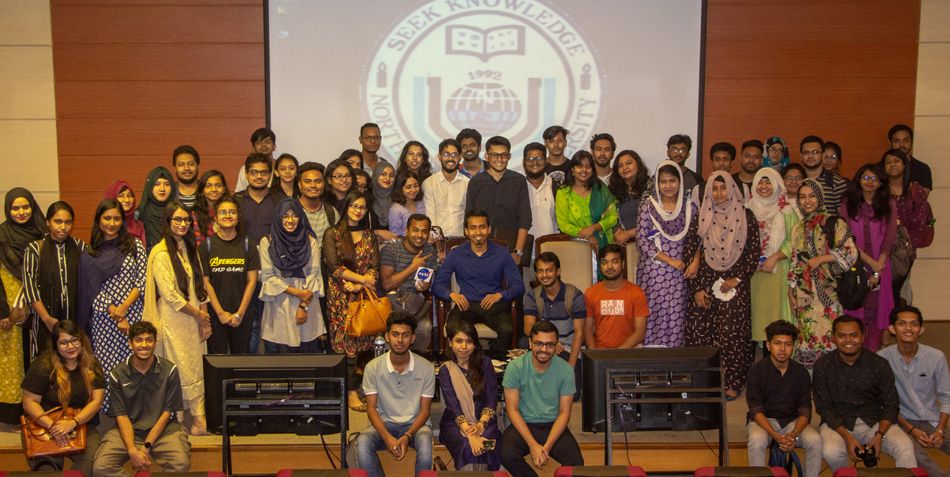
Credit: North South University, Office of External Affairs
What science question intrigues you the most?
The most intriguing science question to me is “How did life first start on Earth?” Atoms and molecules are the building blocks of everything we see around us, including living organisms. The conditions under which these building blocks arranged themselves to give rise to the first single-celled organisms remains a mystery. We are still not sure about the prebiotic conditions (e.g., temperature, pressure, pH, environment, etc.) that were necessary to facilitate the transition from simple chemistry to complex biology. Unfortunately, the key to that mystery may be very difficult to find here on Earth since life on our planet has evolved for too long, and thus those vital clues may have long been destroyed. Consequently, it is important to reach out beyond Earth to ocean worlds like Titan, Europa, and Enceladus where pristine conditions may have safeguarded clues to possible early life.
What science fact consistently amazes you?
The vastness of the expanding universe. Also, the fact that our apparently “huge” Earth is a tiny planet within our solar system, and the entire solar system occupies just a small corner in our Milky Way Galaxy. And there are billions of galaxies out there in the observable universe. The scale of the universe is truly mind-boggling.
What is one space mission that you are particularly excited about, and why?
Of course, Dragonfly! The Dragonfly mission is expected to be launched in 2027 and the spacecraft will get to Titan in 2034. Dragonfly is a helicopter/drone that will hover around Titan and collect samples from the ground to look for clues of possible biosignatures. My current research in Titan’s atmospheric chemistry is relevant to the mission since Dragonfly may be able to detect some of the large organic molecules formed in the atmosphere that ultimately descend down to the surface.
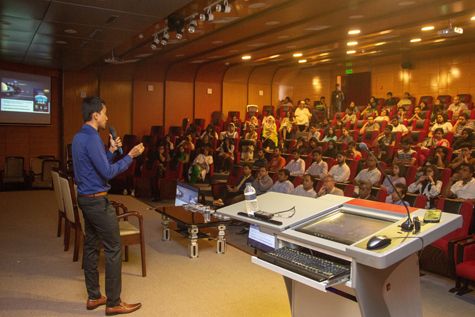
Credit: North South University, Office of External Affairs
What do you like to do in your free time?
Gym, hiking, watching football, and hanging out with friends. Also, I have been into Latin dancing (salsa/bachata/merengue) since my undergrad years. The DMV (DC/Maryland/Virginia) area has a vibrant and welcoming Latin dance community and I have made some great friends through social dancing since I moved to the area in 2017. I have been an active member of the University of Maryland Latin Dance Club (MLDC) and regularly attended their weekly lessons and social dance events during the pre-pandemic times. Shout out to my MLDC family!
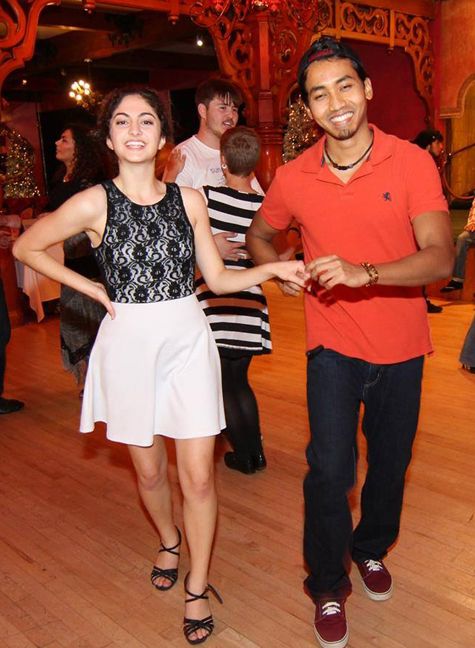
Credit: Shiblee Barua

Credit: MLDC

Credit: MLDC
Biography
Home Town:
Chittagong, Bangladesh
Undergraduate Degree:
Bachelor of Arts in Physics and Mathematics, Berea College, Berea, Kentucky
Post-graduate Degree:
PhD in Computational Quantum Chemistry, University of Georgia, Athens, Georgia
